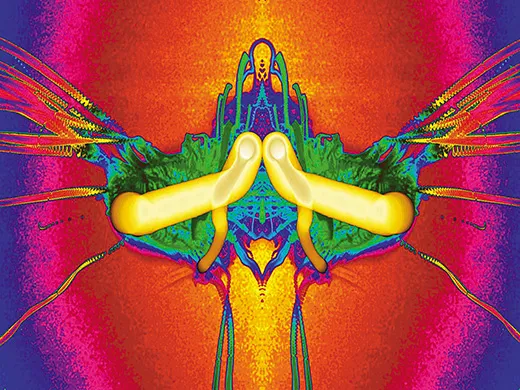In Space, Flames Behave in Ways Nobody Thought Possible
Combustion experiments conducted in zero gravity yield surprising results
/https://tf-cmsv2-smithsonianmag-media.s3.amazonaws.com/filer/Phenomenon-Fire-Unbound-631.jpg)
Recent tests aboard the International Space Station have shown that fire in space can be less predictable and potentially more lethal than it is on Earth. “There have been experiments,” says NASA aerospace engineer Dan Dietrich, “where we observed fires that we didn’t think could exist, but did.”
That fire continues to surprise us is itself surprising when you consider that combustion is likely humanity’s oldest chemistry experiment, consisting of just three basic ingredients: oxygen, heat and fuel.
Here on Earth, when a flame burns, it heats the surrounding atmosphere, causing the air to expand and become less dense. The pull of gravity draws colder, denser air down to the base of the flame, displacing the hot air, which rises. This convection process feeds fresh oxygen to the fire, which burns until it runs out of fuel. The upward flow of air is what gives a flame its teardrop shape and causes it to flicker.
But odd things happen in space, where gravity loses its grip on solids, liquids and gases. Without gravity, hot air expands but doesn’t move upward. The flame persists because of the diffusion of oxygen, with random oxygen molecules drifting into the fire. Absent the upward flow of hot air, fires in microgravity are dome-shaped or spherical—and sluggish, thanks to meager oxygen flow. “If you ignite a piece of paper in microgravity, the fire will just slowly creep along from one end to the other,” says Dietrich. “Astronauts are all very excited to do our experiments because space fires really do look quite alien.”
Such fires might appear eerily tranquil to people accustomed to the capricious nature of earthly flames. But a flame in microgravity can be more tenacious, capable of surviving on less oxygen and burning for longer periods of time.
NASA has practical applications in mind with its research. Scientists hope to learn if certain materials are more flammable in space, and thus to be avoided. Experiments suggest that space station fire extinguishers that squirt gases at a flame are less effective than on terra firma, since they direct air (and oxygen) to the fire, providing additional fuel.
Moreover, the data obtained aboard the space station—through experiments such as comparing how fire spreads on flat objects versus spherical ones—will help engineers better understand the behavior of fuel and flames on Earth, where approximately 75 percent of our power comes from some form of combustion.
NASA scientists are especially excited about the potential applications for a bizarre, unprecedented type of combustion they observed in space this past spring: When certain types of liquid fuel catch fire, they continue to burn even when the flames appear to have been extinguished. The fuel combustion occurs in two stages. The first fire burns with a visible flame that eventually goes out. But shortly afterward, the fuel reignites, taking the form of “cool flames” that burn at lower temperatures and are invisible to the naked eye.
Scientists do not yet have an explanation for this phenomenon. But engineers say that if this chemical process could be duplicated on Earth, the result could be diesel engines that use cool flames to produce fewer air pollutants.
NASA researcher Paul Ferkul says the microgravity experiments provide a unique opportunity to study the underlying dynamics of fire “from a more fundamental point of view” by looking at combustion processes “that would otherwise be masked or at least complicated by gravity.”
